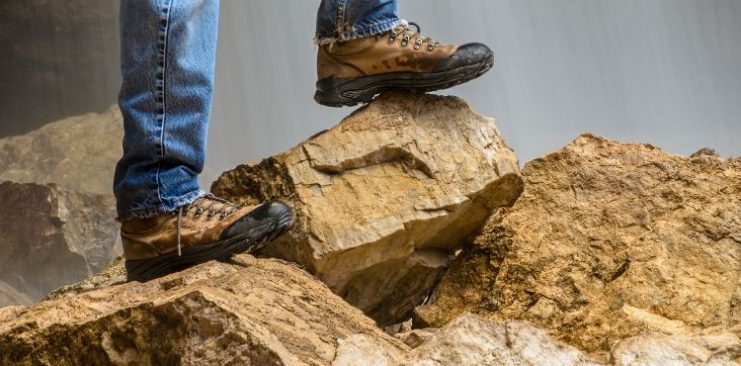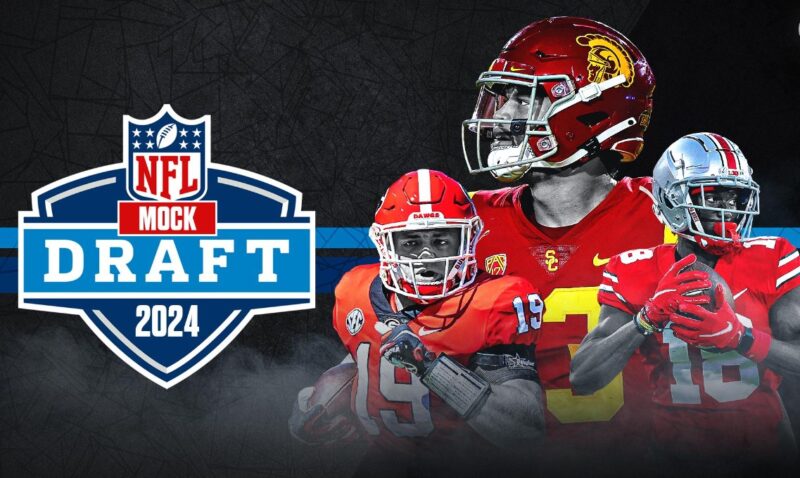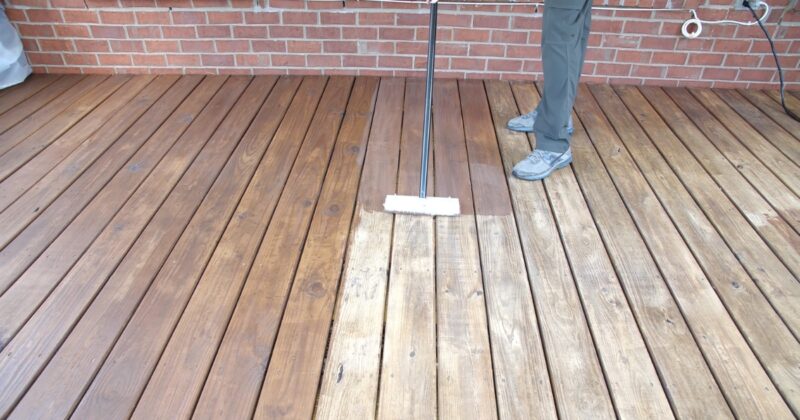If you often get your feet wet on trails, it’s about knowing the clear difference in the boots for their efficiency in keeping feet dry. That’s where the question comes to mind whether your boots should be waterproof or non-waterproof. Waterproof and non-waterproof hiking boots are not the same if you think so.
For instance, the main difference between waterproof and non-waterproof is that non-waterproof membrane in hiking boots dedicatedly features mesh fabric or some other type of porous technology with slightly larger pores; hence breathability becomes pivotal. On the other hand, waterproof hiking boots have less airflow but ideal performance in keeping feet dry and warm. Let’s find out more facts!
Waterproof vs Non-waterproof Hiking Boots Comparison Table
| Features | Waterproof Hiking Boots | Non-waterproof Hiking Boots |
| Waterproofing | Features a lining or membrane (mostly Gore-Tex) below the synthetic or leather materials that repels water | Does not feature the water-repelling membrane under the layers of uppers but uses mesh uppers |
| Weight and Build | Heavyweight | Lightweight |
| Breathability | Do not offer adequate airflow and keeps the interior warmer | Offers thorough ventilation and airflow to the feet |
| Flexibility and Resilience | Feels somewhat stiff and less flexible | Offers the best flexibility and softness |
| Technology | Uses polytetrafluoroethylene (commonly known as ePTFE) | Use mesh or porous fabric |
| Price and Cost | Waterproof boots are costly due to high-quality material and technology usage | Fairly affordable in price |
| Drying Time | Takes a longer time to dry | Faster and efficient drying time |
| Best for | Best for hiking in wet areas, when passing wet streams, and walking in mossy dam areas | Best for light hiking and trail running, best for summers |
Detailed Explanation of Differences
Now let’s check out the in-depth analysis of waterproof vs non-waterproof hiking boots in view of various facts.
1. Waterproofing Technology
Waterproof and non-waterproof hiking boots come with difference that sounds to be the same, however, it isn’t. For example, waterproof hiking boots have especially featured membrane polytetrafluoroethylene (ePTFE) that creates a barrier between water and the boot uppers. So, it keeps the moisture from seeping any further.
Different brands use their dedicated waterproofing technology, for instance, Merrell’s uses the M-Select Dry membrane, KEEN.DRY Waterproof and so on.
However, Gore-Tex being popular for its efficiency is the most common technology in waterproofing. So you’ll see GTX hiking boots in abundance! On the contrary, the non-waterproofing hiking boots do not use any dedicated membrane to keep off water.
For instance, I wore this HOKA Speedgoat 4 – Men’s Hiker Boot which is a non-waterproof boot whereas the Salomon Ultra GTX has a waterproof boot that remains satisfying for keeping my feet dry, thanks to its GTX membrane.
2. Weight and Build
The weight of the waterproof hiking boot is usually more than that of a non-waterproof hiking boot. The reason is apparent. The former boots lean on the additional layer of Gore-Tex or some other technology that works its way to keeping feet dry.
On the flip side, the later hiking boots do not use any membrane to keep feet which makes the overall weight of the boot fairly lighter and best on feet.
I found this waterproof Danner Men’s Skyridge Hiking Boot heavier on my feet due to its 1.29 Kilograms weight whereas this Merrell Men’s Moab 2 Vent Hiking Shoe felt swift and light on my feet with only 1.1 Pounds of total weight.
3. Price and Affordability
The price and affordability factor in anything is an instant helpful parameter for its buying. As a rule of general approach, waterproof hiking boots are usually expensive due to other smart use of technology, high-quality material choice, and the efficiency that guarantees dry feet.
On the other hand, non-waterproof hiking boots are fairly affordable in price range or I must say, they offer flexibility in the price tags!
The price of hiking boots keeps on changing especially when it comes to enticing deals, however, I have bought this KEEN Women’s Voyageur Mid Height Breathable Hiking Boots for just $75.98 whereas this Kenetrek Mountain Extreme Non-Insulated Hiking Boot cost me $534.95 in total!
4. Good for
Since waterproof hiking boots are not ideally breathable, you can consider them for hiking in colder areas where the feet’ breathability should not be a major concern. Conversely, non-waterproof hiking boots are suitable for summer weather hiking.
So they make their performance best for short summer trail running and other outdoorsy trips. However, for other parameters such as traction, comfort, and support, both of these boots are outstanding!
As a rule of thumb, waterproof hiking boots work well on puddle water and mossy wet surfaces, whereas non-waterproof hiking boots are more suitable for rocky terrain and abrasive ground. Note, that no waterproof hiking boot is 100% reliable for dry feet. If you want dry feet even under deep water standing, you need those popular yellow rubber boots!
Take a look at this Eddie Bauer Men’s Leavenworth Insulated Hiking Boot which is insulated and worked best for me in snow and colder environments without any minimal ankle support. On the contrary, these KEEN Men’s Targhee Vent Low Height Breathable Hiking Shoes delivered great performance for summer hiking and mid-range trailing.
5. Breathability and Airflow
Waterproof hiking boots lack ideal breathability but they are cozy inside whereas non-waterproof ones are more efficient in keeping up with airflow and foot ventilation. That is the reason why crossing water streams and mossy wet terrain never makes feet damp at all if you wore waterproof boots. However, if your feet sweat a lot, it’s better to choose a moist-wicking and breathable hiking boot.
For breathability, I found this Hoka Tor Ultra All Gender Hoka One One Hiking Boot great for the decent airflow factor. My feet remained ideally dry and comfortable. On the other hand, this NORTIV 8 Men’s Insulated Boot has been treated for its insulation but didn’t offer me much breathability.
6. Drying Time
Waterproof hiking boots take considerable time to dry once fully wet. Certainly, the lack of breathability has to do with the longer time it takes to dry. For instance, a waterproofing boot featuring a leather upper usually demands 3-8 hours to fully dry whereas the non-waterproof only needs approx. one to two hours to completely dry. You can infer the performance!
I wear this KEEN Women’s Targhee Vent Mid Height Breathable Hiking Boot more often on trails and it gets dirty for the same reason. So when I cleaned this boot, it didn’t take more than 2 hours to completely dry due to vented mesh panels for breathability
However, DREAM PAIRS Women’s Mid-Calf Waterproof Winter Snow Boot took reasonable time for inside-out drying!
Waterproof Hiking Boots Vs Best Non-Waterproof Hiking Boot
When you want quality, there is always room to narrow down things! And if you’re still somewhat concerned about the performance and suitability of the boot when upon multiple parameters, keep scrolling more!
Below I’m listing the sought-after choices of best waterproof and non-waterproof boots that I have tested and tried on slippery trails to mossy terrains and it should help you choose the perfect hiking boot.
Perfect Waterproof Hiking Boots
- Merrell Moab 2 Mid Waterproof Hiking Boot – It’s exceptionally best for locking moist out and leaving feet cozy and warm
- Mishansha Unisex Warm Hiking Boot – This boot is ideal for snow hiking and anti-slip outsole design
- The North Face Vectiv Exploris Mid Futurelight – It’s stylish and comes with abrasion-resistant Cordura ripstop mesh that adds its durability
Pros and Cons of Waterproof Hiking Boots
Pros
- Keeps feet dry and safe
- Offers supportive design and protection
- Feature high-quality abrasion-resistant uppers
- Durable and ideal for hiking in cold weather
Cons
- Can be expensive
- Less breathable and takes time to dry
- Heavyweight and feel a bit stiff
Perfect Non-waterproof Hiking Boots
- Salomon Men’s X Ultra Prime Hiking Boot – Its low-profile and lightweight design is best for trail running and light hiking without stopping
- KEEN Women’s Voyageur Hiking Boot – Best for Plantar fasciitis feet with protection and plenty of cushioning for ankle support; also is breathable for excessive sweating feet
- Merrell Women’s Alverstone Hiking Boot – It comes with a dedicated Merrell Air Cushion in the heel for minimizing shock plus its affordable in the price range
Pros and Cons of Non-Waterproof Hiking Boots
Pros
- Flexible and need no break-in
- Affordable in price and lightweight
- Great for day-hiking and strolling
- Excellent for breathability and quick for drying
Cons
- Can’t wear it in the snow
- Not efficient for keeping feet dry
- Lack of ankle abrasion-resistant durable uppers
Related Posts:
- Where to Place Subwoofer With Soundbar - Finding the…
- How to Hide or Unhide a Song on Spotify: Crafting…
- Vivo V20 Pro Launch With A Dual Selfie Camera -…
- LXQt vs XFCE: Which is the Best Linux Desktop Environment?
- HDMI vs. DisplayPort vs. DVI vs. VGA vs. USB-C –…
- What Is Anti-Aliasing And Which Type Should You Use?…







